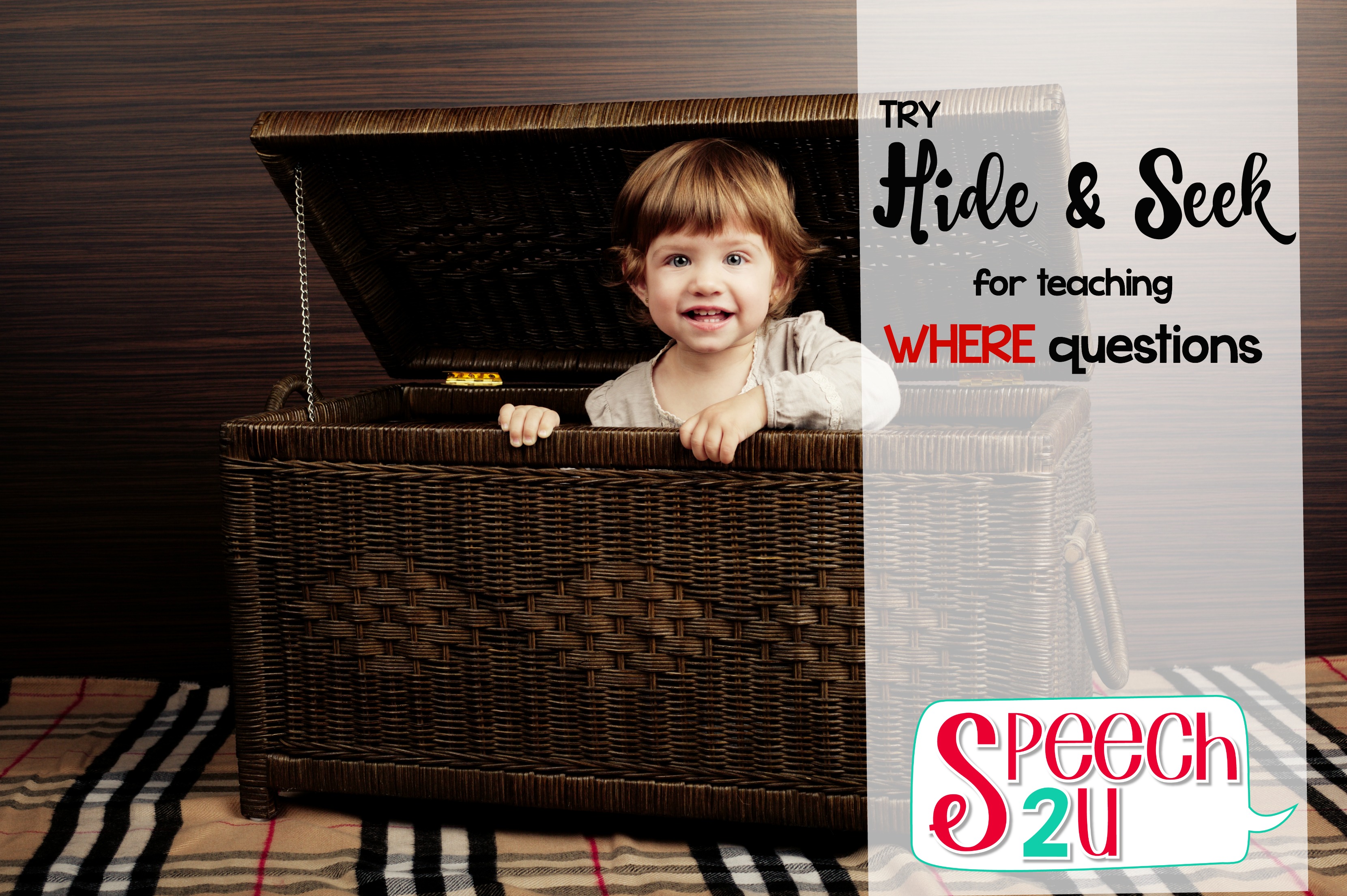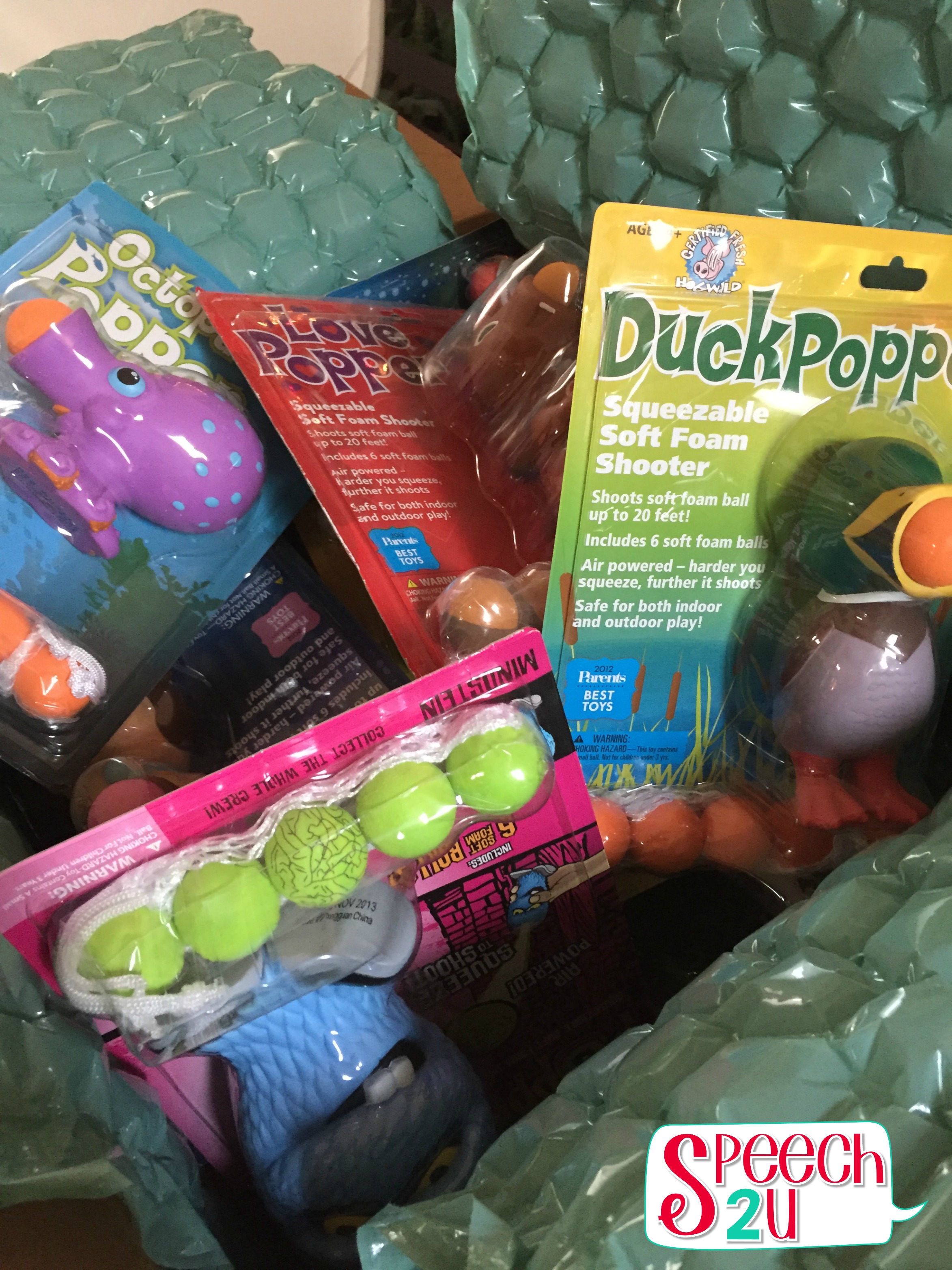Where questions are some of my favorite questions to teach. There are a lot of fun activities for working on WHERE questions. Plus I think they are pretty easy to tackle in therapy. I want them to be able to talk about where they were, what they want to do and also where objects are in location to them.

Teaching WHERE questions
WHERE questions are answered by a place or location. Like who questions, I find that there is a vocabulary component to WHERE questions. Sometimes I am teaching prepositions at the same time as I am teaching how to answer WHERE questions. Children also need to have a good understanding of proprioception (where they are in space) and how things relate to them to be able to understand prepositions. Personally my sense of where I am in space is pretty poor-it’s why I opened my car trunk onto my head last week. I just wasn’t sure how close I was to it (I guess.) Read more about this HERE.
I usually start by having my clients work on rooms of the house or rooms in the school. We can talk about where we will go or where different people are in the school. It can be helpful to have visuals of each room/area of the school.
Hide & Seek for WHERE questions
When I was doing home visits, I loved to work on vocabulary for rooms in the home by playing hide and seek. I played a few varieties of this game and it’s easy to make it more difficult to target different language structures. Sometimes I would have another member of the household hide-or sometimes the child and I would hide. We could work on planning (Where are we going to hide) or looking (Where do you think they hid?) If you don’t have another person available, try hiding a favorite stuffed animal or bring a mylar balloon to hide.

Then I’d ask the child, “Where is ______?” It’s easy to decrease to grade the difficulty by using pictures. As they became successful, I would increase the difficulty by encouraging them to answer using prepositions (on, under the bed, in the bathtub, outside of the bathtub etc). Eventually we could work on complex sentences. For instance, if I hid Elmo under the bed, I’d say, “Where’s Elmo?” and then cue the following answers:
- bedroom
- under the bed
- in the bedroom under the bed
- Elmo is in the bedroom under the bed
Creating a personalized set of WHERE questions
Years ago, I drove around my town on Thanksgiving morning and took pictures of local buildings, stores and parks that I thought my clients might want to visit. I edited them to include the name at the bottom and printed them online. It’s easier now that you can take screen shots of businesses. Here is part of a set that I made up in about 5 minutes.

- Local kid-friendly restaurants
- Local parks
- Stores
- Kid activity places
- Library
- School
If you can, ask the family to send pictures of friends/relatives houses as well as their child’s home. I love this because it seems much more functional than practicing WHERE questions such as “Where do birds lay their eggs.” You can use these cards to teach personalized WHERE questions such as:
- Where do you live?
- Where will you go this weekend?
- Where did you go?
WHERE POPPER TOY:

As you can tell, I have an addiction to ball popper toys. My clients LOVE them and they are fun to use in therapy. You can work on WHERE questions with ball poppers by having the child tell you where to shoot the toy. For example, should you shoot it at the door or under the table? If you have a poster on your wall, you could have them tell you if you should shoot the ball above or below the poster.
Interested in learning more? Make sure to check out my previous posts:
QUESTION: Which of these activities seems easiest to implement in therapy? Leave a comment below, I’d love to hear your opinion!
Can I ask a favor? If you liked this post, could you take a minute to share it on Facebook or Pinterest? It really makes a difference. Thanks!


Dear future-collegue,
Thank you so much for all your great tips and ideas on this website. I am a SLP student from the Netherlands, and I’m always looking for new ideas. Now I’ve noticed that many SLP’s in the US have a blog or website where they share their idea’s and other information. But my question is, where do you get your ideas and information from? Are these your own? Can I give your webiste up as a source or do you have other references where you get your idea’s from?
With kind regards,
Petra
Thank you for visiting. I try to cite sources or reference information in my blog if I am using another’s ideas. Some things though I think I have learned elsewhere in my years of training-and they have become so ingrained that it is hard for me to remember where I learned them from.
The information on this post was really just me thinking about how to break down WHERE questions and teach them more systematically.